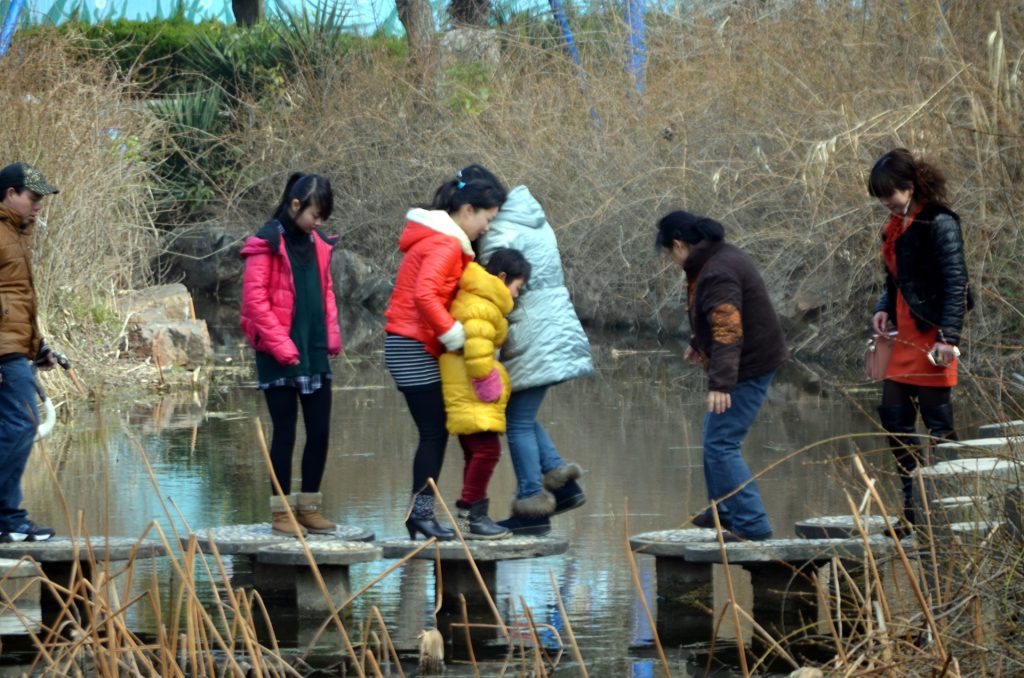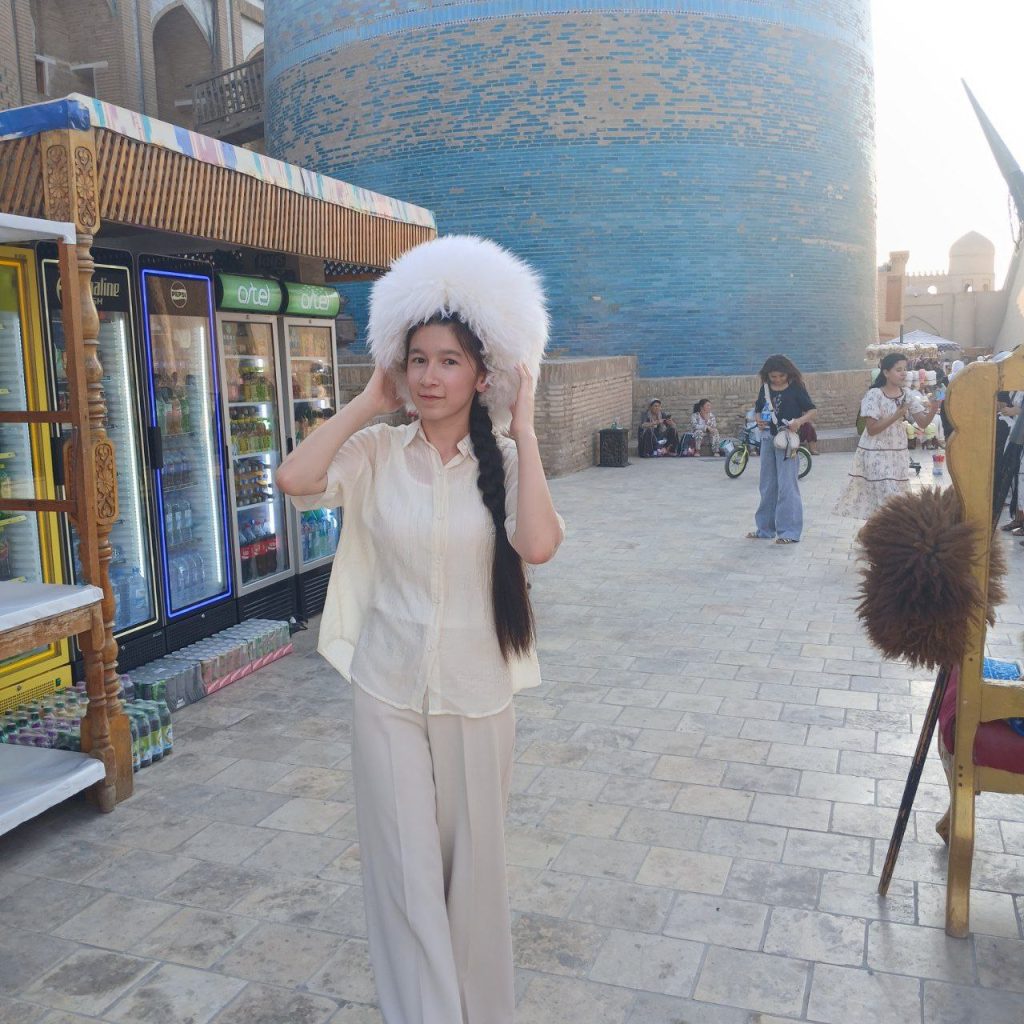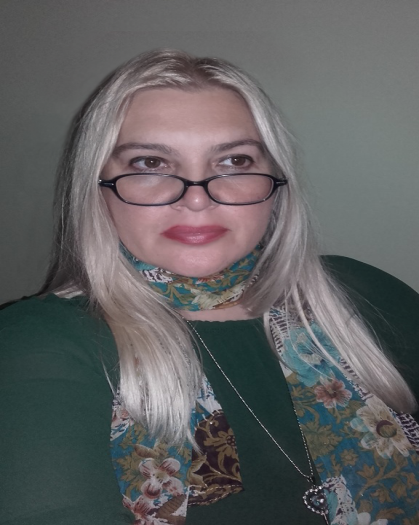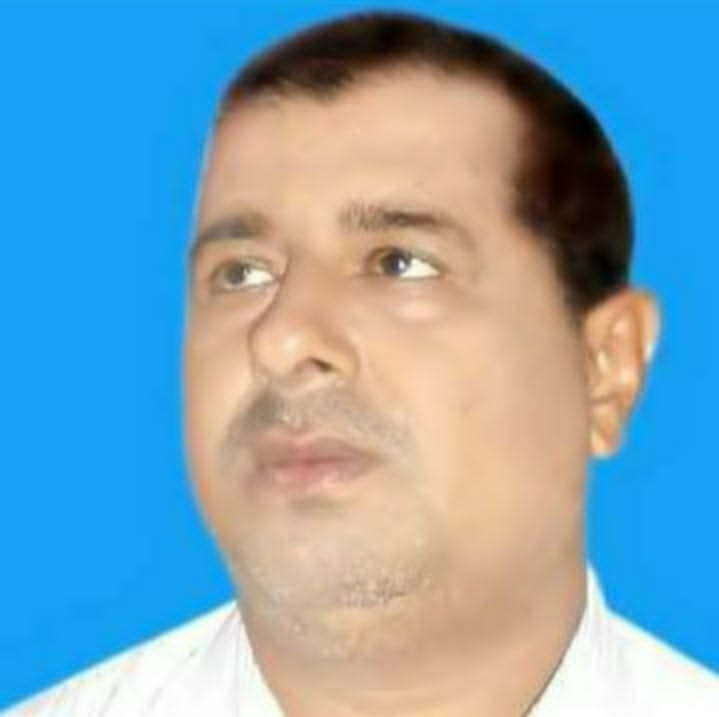
This month, we consider the peace, love, and joy honored during the world’s many December holiday celebrations. This issue also encourages us to take stock of where we are as human beings, physically, intellectually, and morally, and to take whatever steps are possible to rise to the next level.
Sometimes that’s going outside and getting some exercise. Brian Barbeito walks by a lake and considers the joy of simple living and natural beauty.
Mrinal Kanti Ghosh recollects a dreamy summer night. Olga Levadnaya captures the solemn stillness of midday heat. Christina Chin renders up the cold silence and calm of winter.
Aura Echeverri Uribe evokes the monumental destruction of an avalanche. Jack Galmitz speaks to how we manage and control wildness, in our neighborhoods and our bodies, and how it can reassert itself. Carrie Farrar speaks to the joy and wonder of visiting France to see the Mer de Glace glacier. Mahbub Alam speaks to a solid connection between humanity and nature, like a tree standing firm in the changing winds.
Tasneem Hossain draws on the owl as an extended metaphor for wisdom and protection. Roodly Laurore reflects on the tender and colorful beauty and diversity of nature in a piece which he intends to bring comfort in a violent and turbulent world. Maja Milojkovic encourages us to imagine a new world of gentleness and peace towards our earth and each other.
Elizabetta Bonaparte’s poetry takes a short, but strong and cogent, stand against war. Valentina Yordanova, in poetry translated by Yoana Konstantinova, laments the mindless destruction war brings to ordinary lives. Eva Petropoulou Lianou calls for genuine humanity in a world at war.

Samar Aldeek tenderly celebrates peace in her bilingual poetry. Dr. Perwaiz Shaharyar draws on the style of courtly romance to honor the legacy of Mexican poet, peace activist, and literary cultural worker Dr. Jeannette Tiburcio. Fernando Jose Martinez Alderete joins in the tribute to Dr. Tiburcio and also speaks of the need for peace and mutual respect.
Paul Durand warns us of dangerous currents, both in the ocean and in American politics. Bill Tope’s poem criticizes human rights abuses committed in the name of immigration enforcement. Duane Herrmann speaks to the spiritual unity of all the world’s people under Ba’hai teachings and how that serves as an antidote to racism and anti-immigrant sentiment.
Travel gives us firsthand experience with different cultures and helps us understand each other. Türkan Ergör illustrates the dislocation of travel through clever and poetic alteration of word and line breaks. Lakshmi Kant Mukul captures the exhilaration and elevated beauty of plane flight. Abdumuminova Risolabonu Nizamovna discusses how travel helps people learn practical skills, including pragmatic communication in multiple languages.
Learning foreign languages, and mastering one’s native language, helps us understand each other, whether we travel in person or through imagination and books. Shakhnoza Pulatova Makhmudjanovna offers strategies for mastering the Arabic language. Muhammadjonova O’giloy Bunyodbekov qizi offers up suggestions for learning Turkish that would be helpful for any foreign language. Abduhalilova Sevdora Xayrulla qizi highlights grammar rules surrounding modal verbs in the Uzbek language. Allaberdiyeva Farangiz outlines ways for students learning English as a foreign language to gain writing proficiency.
Xudoyberdiyeva Jasmina analyzes the linguistic phenomenon of “chatspeak” and ‘text-speak” on the Uzbek language in a piece that’s more intrigued than negative. Dinora Sodiqova discusses the importance of professional communication for aspiring young Uzbek leaders.
People can also travel through time by reading older works and studying history. Petros Kyriakou Veloudas reflects on the joy and the weight of being part of a creative heritage, even when one does not know the names of each and every ancestor. Poet Eva Petropoulou Lianou interviews poet Muhammad Shamsul Huq Babu about his literary legacy and dream of building a large book museum.

Dunia Pulungeanu highlights the lifetime intellectual and literary accomplishments of Dr. Edwin Antonio Gaona Salinas. Choriyeva Go’zal Gayratjon qizi explores the resurgence of academic and cultural interest in foundational works of Uzbek literature. Xudoyberdiyeva Mohiniso reflects on the historical significance of the Mud Battle, an early military defeat for Central Asian medieval historical figure Amir Temur.
Farzona Hoshimova celebrates the pride and beauty of the Uzbek culture. Matnazarova Munisa encourages young and old Uzbeks to remember and preserve their traditional culture. Bobonova Zulfiya sings of the pride, freedom, and beauty of her native Uzbekistan. David Woodward evokes a quest for truth through reading Krishnamurti, ultimately reconnecting himself with his family. Rahmonkulova Gulsevar Samidovna considers the cultural values implicit within Uzbek folk legends.
Muhammadjonova Ogiloy Bunyodbekovna reviews Abdulloh Abdulmutiy Huda Said Bahul’s book Qu’logim senda, qizim, which provides Islamic faith-based guidance for young girls, narrated by a loving father. Ruzimbayeva Quvonchoy also urges Uzbeks to hold onto their traditional values, including love, bravery, and respect for women.
Maja Milojkovic translates Eva Petropoulou Lianou’s tribute to hard-working women around the world from English into Serbian. Mashhura Ochilova highlights the historical respect for women in Uzbek culture and what modern Uzbek women have achieved. Jaloldinova Gulzirahon Otabek Kizi highlights women’s increasing participation in Uzbekistan’s public life.
Orifjonova Nozima Azizbek considers the prospects for preserving the Uzbek language in a time of economic and cultural globalization. Rahmonqulova Gulsevar Samid qizi analyzes the crucial father-son relationship at the heart of the Uzbek folk epic tale “Alpomish” and its centrality to Uzbek family-oriented culture. Rahimberdiyev Ozodbek outlines key elements of Uzbekistan’s heroic tales.
Rashidova Shoshanam explores the long shadows Sophocles’ Oedipus Rex has cast over human literature and psychology. Christopher Bernard reviews Cal Performances’ recent dramatization of Chicago’s Manual Cinema’s The Fourth Witch, about the after-effects of Macbeth’s violence on his victims. Paul Murgatroyd draws on Greek tragedy to poke morbid fun at humans: inwardly messy and selfish, even when outwardly clean. J.J. Campbell provides his signature dark view of human nature, full of sardonic, blunt, emotionally transparent blue-collar surrealism. John Grey picks apart human emotions in his vignettes, attempting to understand why we act as we do.

Dr. Jernail Singh describes how Dr. K.B. Razdan diagnoses some emotional and psychological ills of modern life in his book Gather Ye Rosebuds. Sean Meggeson’s visual poetry speaks to what we gain and lose as modern society progresses. J.K. Durick waxes poetic about times when it seemed that matters were more easily understood and categorized.
Abdulhafiz Iduoze’s epic poem, layered with traditional and modern references from Benin’s culture, serves as a ritual chant and prophetic warning about colonialism and corrupt power structures. It situates recent dynamics within epic time, reminding readers that current matters are not destined to last forever.
Shikdar Mohammed Kibriah affirms the reality of his personal experience amidst the complex claims of philosophical schools. Aisha Al-Maharabi speaks with the voice of one who asserts his claim to existence, writ large on the natural and human worlds. Strider Marcus Jones speaks to reclaiming and holding onto our interior life, emotions, and connection to nature in a world of mass media and technological disruption and deception.
Many other creators explore our internal lives, what we can learn from ourselves and each other and how we can grow as human beings. Allison Grayhurst speaks to her creative and personal journey: learning to function and create through loss, to integrate pain and struggle into her process. Alan Catlin’s fanciful “anxiety dreams” play with our modern insecurities about navigating daily life. Also experiencing anxiety, Mirta Liliana Ramirez’ poetic speaker takes a bit more time before she’s ready to venture out in the world.
Alimardonova Gulsevar Sirojiddinovna explores the balance between personal dreams and duty to society in Somerset Maugham and Abdulla Qodiriy’s writing.
Rus Khomutoff’s latest poetry collection Kaos Karma, reviewed by Cristina Deptula, flows through various words and ideas, pulling us along on the wings of a slow dream. Stykes Wildee’s latest poem seems at once dreamlike and ordinary and conversational, casual thoughts within the subconscious. Mesfakus Salahin’s poetry is ghostlike, contemplative, detached as he contemplates love and death. John Doyle’s poetry harks from a variety of inspirations: everything from insects to gas stations to trains and the countryside. Arjun Razdan’s quick fictional sketch compares young women he sees to elegant fine wine.

Abdulsamad Idris also explores tragedy and loss through a frank and visceral voice. Graciela Noemi Villaverde finds herself lashed by the storms of loneliness and sorrow. Hanaan Abdelkader Ashour approaches loss with tenderness, offering a kind and reverent note of remembrance for departed loved ones. Marianne Jo Alves Zullas speaks openly of her mourning for her departed mother, everywhere and nowhere at once. Mykyta Ryzhykh’s poem captures the emotional emptiness of a relationship where one person loves intensely, and the other remains distant, consumed by their own habits. Marjona Eshmatova outlines various types of family system dysfunction and how to address them psychologically. Taylor Dibbert points to the ways even well-meaning people can misunderstand each other. Dilobar Maxmarejabova warns us how a person’s heart can become colder and more jaded over time.
Mohamed Rahal speaks of striving for authenticity in one’s faith and in love. Narzulloyeva Munisa Bakhromovna encourages people not to compare themselves negatively with others’ projected lives on social media. Raximberdiyeva Moxinabonu outlines the pressing mental health concern of smartphone addiction and the need to balance our phones with the real world. Moldiyeva Bahodirovna speaks to the way digital technologies have permeated our lives and how to have the Metaverse complement, rather than replace, our world. Choriyeva Xurmo urges balance in the use of digital media in preschool education. Orozboyeva Shodiyeva highlights educational social media applications and encourages her peers to use those rather than focusing just on entertainment.
Jacques Fleury reviews Boston’s Huntington Theater’s production of Alison Bechdel’s tale Fun Home, highlighting themes of intergenerational understanding, how children gradually came to make sense of their parents’ worlds. Young poet Avazova Diyora Alisher qizi offers her good wishes to her teacher in a tender poem. Fayzullayeva Shabbona Sirojiddinova shares her appreciation for her wise and caring father.
Priyanka Neogi playfully celebrates innocent, childlike love. Milana Momcilovic evokes an eternal, spiritual love. Dr. Brajesh Kumar Gupta captures an elegant romantic kiss under moonlight. Vorhees describes erotic and tender love with gentle whimsy and echoes of history. Kemal Berk contributes a graceful love poem about the merging of egos and personalities within a relationship.
Ana Elisa Medina describes a love that encourages her to become a better person. Mohan Maharana celebrates the value of small acts of kindness. Abdusaidova Jasmina shares the importance of kindness through a children’s tale involving a mouse. Balachandra Nair highlights the value of virtue by presenting positive character traits as valuable jewels on display.
Sayani Mukherjee pleads for deep, enduring joy that can withstand the world’s problems.

One way many people find joy is through engaging in various forms of creativity and knowledge gathering. Farida Tijjani draws on a wide variety of technical and natural inspirations to explore gender, creativity, and society.
Various contributors speak of advances in different fields. Uzoqova Gulzoda encourages innovative approaches to elementary school education. Nazulloyeva Feruzabonu highlights the value of science and innovation in inspiring society as well as providing material advancements.
Abdujabborova Rayhona points out ways medical and psychological professionals can reduce unhealthy stresses for pregnant people. Durdona Sharifovna Roziboyeva highlights the success of a recent orthodontic treatment for upper airway issues.
Dinora Sodiqova outlines basic principles of modern consumer advertising. Mamarajabova Shahnoza discusses how digital technologies are transforming the field of accounting. Dianne Reeves Angel celebrates the physical and mental artistry of comedian and actor Buster Keaton.
Several pieces remind us that as we advance in our knowledge and our technical skills, we must bring our humanity along with us. Kandy Fontaine raises questions about ethics and oversight concerning how people are treated in American hospitals. Avazbekova Rayyonaxon reminds medical professionals to display professional behavior as well as knowledge.
Finally, Dr. Jernail S. Anand reminds us to occasionally step back from the clatter of daily human interaction to connect with the universe on a deeper level. We wish all of you inspiration and a chance to think, feel, and connect with the world beyond yourselves this holiday season.




